Last year, when I cycled through Sicily, the lunar landscape of mighty Etna awed me like only a few places before. I vowed to return and hike one of the world’s most active volcanoes. In May 2023, I was back in Sicily, ready to climb as high as possible through the lava fields and around the yawning craters. It didn’t go quite as planned and I didn’t make it to the top craters but it was still an unforgettable experience. In this article, you will find useful tips to help you organise your trip to Mount Etna.
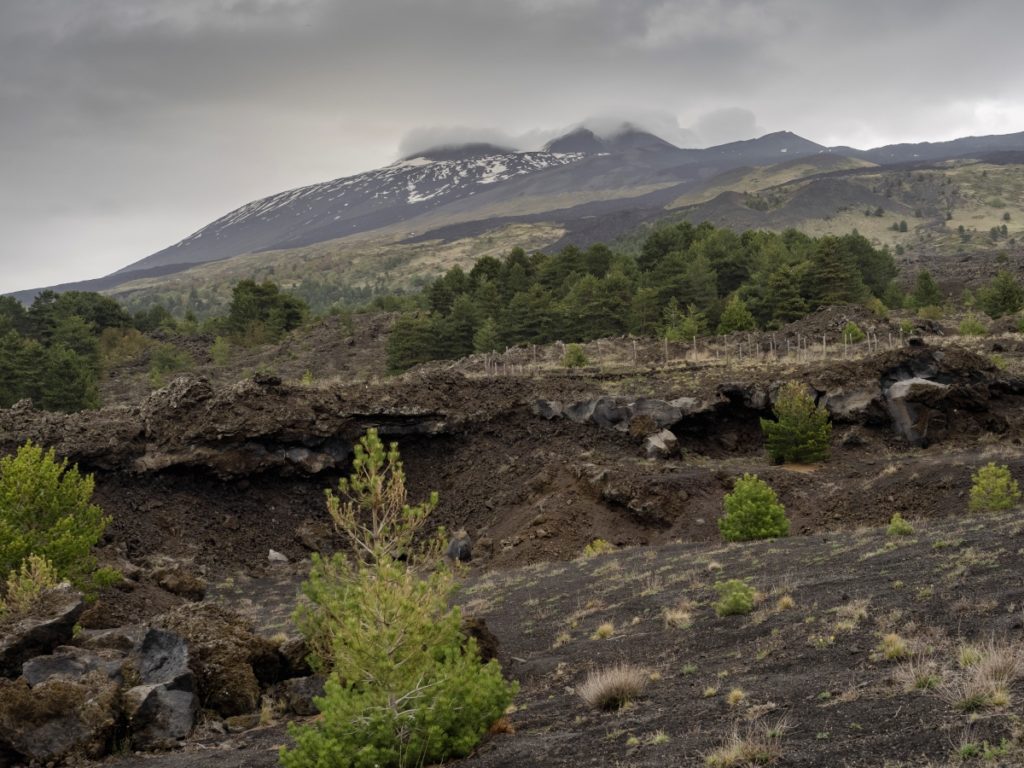
🌋 About Mount Etna
The 3357 metres tall Mount Etna is Europe’s highest active volcano. With over 300 craters, the stratovolcano is a vast playground for hikers and geologists with 1,190 square kilometres of volcanic rocks covering the rivers of magma flowing underneath.
Etna overlooks the port city of Catania on the east coast of Sicily, raising almost straight from the sea level. The volcano belongs to the most active volcanoes on earth, with the last eruption recorded on 22 May 2023 (just a week after my visit).
How to get from Catania to Mount Etna
Bus from Catania to Mount Etna
The cheapest way to get to Mount Etna from Catania is by bus. A return ticket costs 6,60 euros. The AST bus departs from platform 6 at the bus station at Piazza Giovanni XXIII (close to the railway station, you can find the exact location here). You will arrive at the Rifugio Sapienza and the cable car lower station.
The bus ride to Mount Etna is an experience in itself.
There is only one bus a day (departure from Catania at 8:15, return from Rifugio Sapienza at 16:30. There is an extra bus in the high season (15 June-15 September at 11:30 from Catania).
You can buy the tickets online at the AST website, but do it in advance and print the paper ticket. We tried booking the online ticket while standing in line for the bus. It wasn’t possible (the staff said they won’t accept it anymore).
If you don’t have an online ticket, you can buy it from the driver. Be at the bus station early (at least 7:00), especially on weekends and during the peak season. First come, first served.
The bus ride is quite long (2 hours). One reason for that is the bendy road, another a 30 minutes long break in Nicolosi, where you can get a cake or coffee (it seems the bus company is affiliated with the coffee place there and make this stop to drive some traffic).
You can take the bus back to Catania the next day if you stay overnight at Rifugio Sapienza. We did it, and it was not a problem at all.
Taxi/Uber
If you’re not one of the lucky ones who manage to get a sit on the bus, you can take a taxi or Uber from Catania to Etna. A taxi costs about 95 euros. With some luck, you might find an Uber for about 70-80 euros.
Private transfer / Etna tour with transfer from Catania
Some guided hiking tours on Etna offer to pick you up straight from your hotel in Catania.
What is the best time to hike Mount Etna?
You can visit Mount Etna all year round, but if you’re aiming for the top craters, the best time to visit is from May to October. Even in May, there can be a lot of snow on the slopes of Etna.
Don’t forget that Etna is a high mountain. It might be sunny and hot in Catania, while the top craters are covered in clouds. The higher parts are often windy and foggy, so bring warm clothes and proper hiking gear.
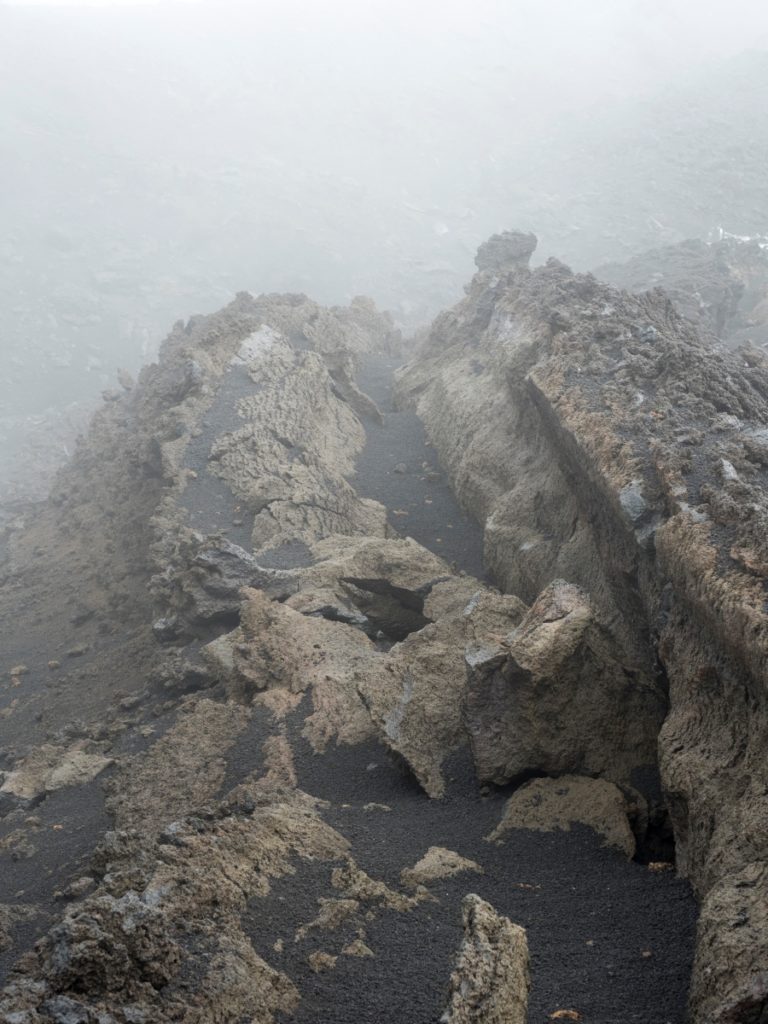
Hiking Mount Etna – what do you need to bring?
Here is a little gear checklist for hiking Mount Etna.
- Rain jacket
- Gloves
- Buff (can be used as a scarf when its cold or to cover your face in case the volcanic activity is high and the air is full of toxic gases)
- Sunglasses
- Hiking boots (high ankle boots are better – I used my low ankle trekking shoes, and the little stones and sand getting in was quite annoying)
- Good to have: trekking poles – they will make the descent in the loose volcanic sand a bit easier
If you don’t have hiking gear, you can rent rain jackets, hiking boots and trekking poles at the service desk at the cable car station. Most companies organising guided hikes also provide hiking gear.
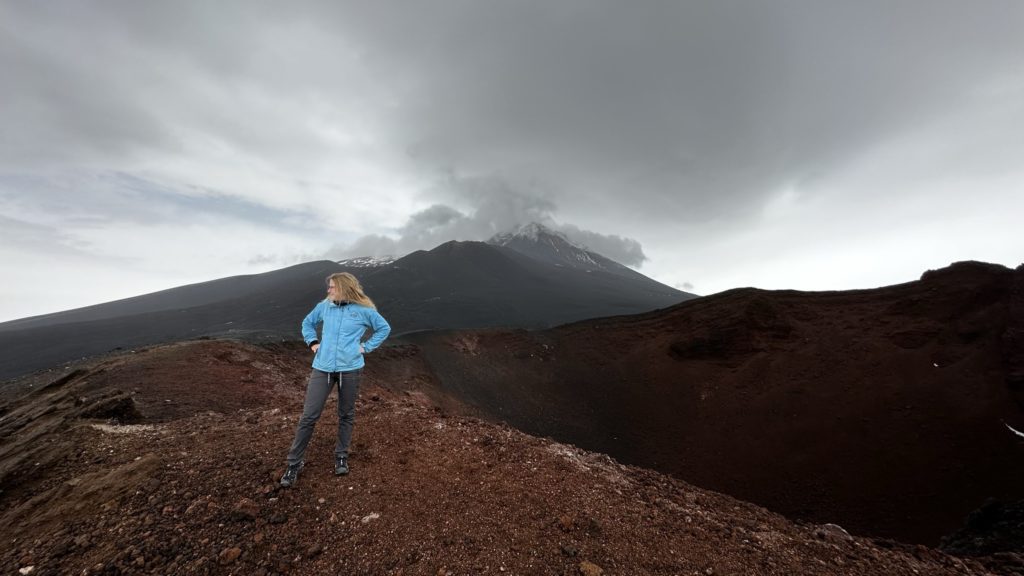
Is it possible to hike to the summit of Mount Etna without a guide?
Mount Etna is an active volcano with a constantly changing landscape making navigating challenging even for experienced hikers and climbers. You cannot go higher than 2900 metres without a guide.
Currently (May 2023), it is impossible to hike to the summit craters of Mount Etna due to the high volcanic activity. All tour companies we contacted before our trip confirmed they could only take us to ca. 3000 metres.
Mount Etna Guided Tour
We decided to book a Guided Tour to Mount Etna with Guides Etna Sud. While the summit craters tour was impossible, they offered to take us to the maximum possible altitude, where you can see old lava flows, the summit craters, and the Bove Valley.
The price was 90 euros, including the cable car, guide and equipment (they offer hiking boots, jackets, helmets, poles, backpacks and socks).
They have two tours per day. You will start from the Refugio Sapienza at 8:45 or 9:45 am (the second tour usually waits for people who come by bus from Catania at 10:15).
We arrived at the Rifugio Sapienza the day before the tour to have more time to explore the lower parts of the volcano and get used to the altitude.
The weather forecast didn’t look promising: strong wind, clouds and a risk of thunderstorms in the afternoon. Our tour was hanging on by a hair.
In the pouring rain, we showed up at the chalet of the guides. We were told that some team members were checking the conditions in the higher parts of the mountains. We had to wait.
After a little delay, the situation was clear. Or, to be more literal, very unclear. Dense clouds covered everything above 2500 metres, the visibility was poor, and thunderstorms were expected in the afternoon. The tour was cancelled.
I appreciated that the Guides Etna Sud were fully transparent with us, properly checked the conditions, and made an informed and responsible decision about cancelling the tour. They also advised us what to do instead on our own (while many tour companies would try to sell you an alternative excursion which, in these circumstances, would be quite a waste of money).
Hiking around Mount Etna in bad weather
We were pretty bummed that we couldn’t get closer to the summit craters, but we did the most out of the day despite poor visibility and the fast-changing weather.
Here are some tips on hikes you can do if the weather on Etna isn’t the best.
Hiking to the botanical garden (with views of the summit craters)
If it’s super windy and unpleasant in the upper parts of Mount Etna, the best you can do is to stay within the tree line to get some shelter from the gusts. I know, sounds quite disappointing, especially if you had your mind set on exploring the craters.
The hike to the botanical garden is scenic. Unless it is extremely cloudy, you can admire the majestic silhouettes of the fuming top craters.
A loop from Rifugio Sapienza is about 8 kilometres. It crosses some dramatic lava fields from the older eruptions and beautiful forests.
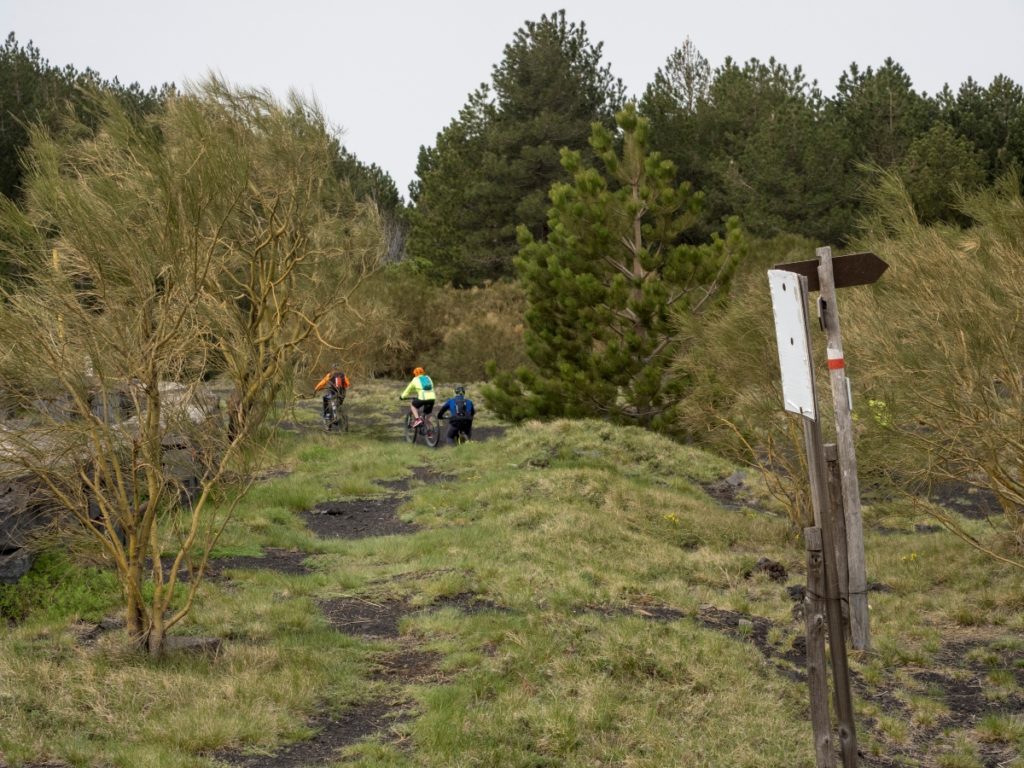
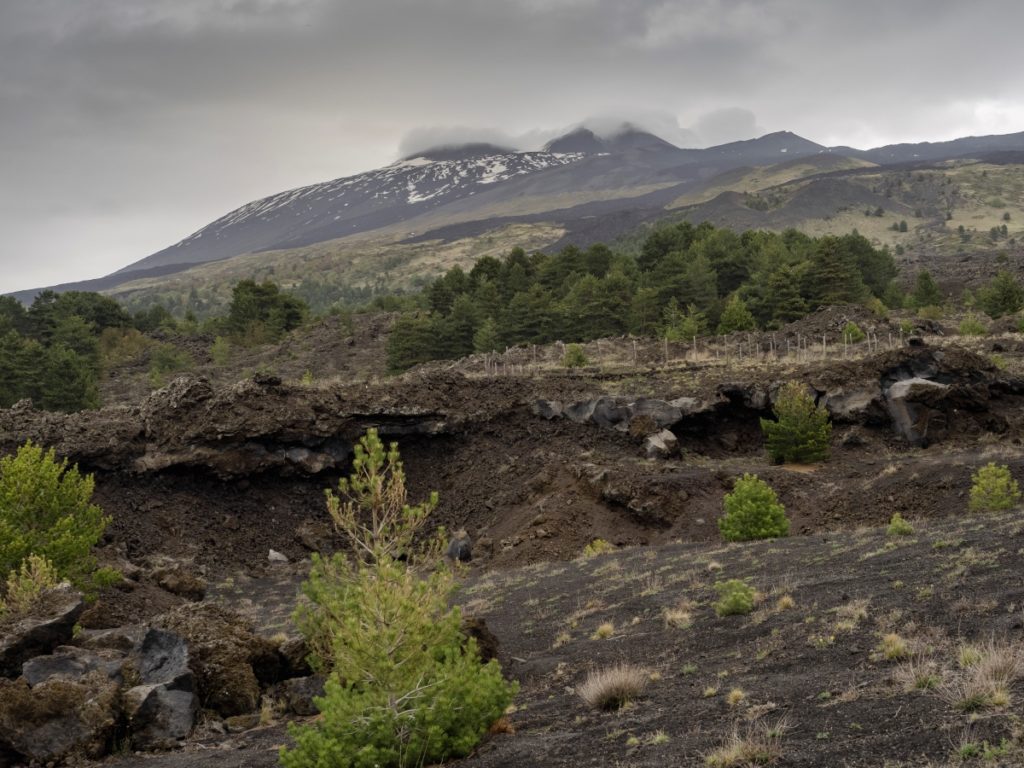
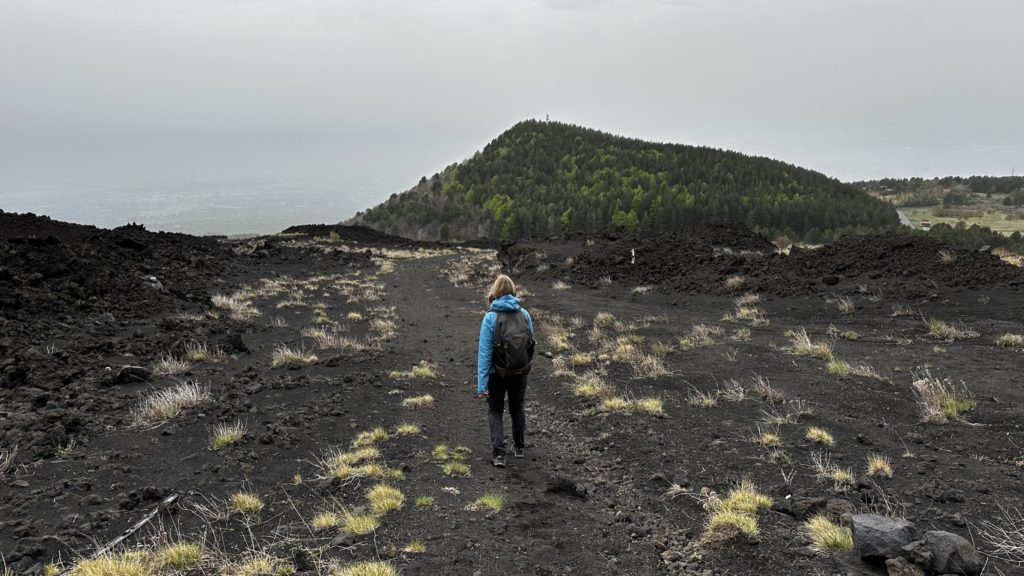
You can find the map here.
Silvestri Craters
Silvestri Craters are like Etna in miniature. Next to the parking at Rifugio Sapienza, there are two craters formed following the eruption in 1892.
Hiking around both of them will take you about an hour. It’s a great walk for everyone whose fitness level doesn’t allow more strenuous hikes.
You can find the map here.
Cable car and Cratere Piano del Lago
Looking at thick clouds enshrouding Etna, we were reluctant to pay 50 euros for the cable car. What’s the point in going somewhere if everything around you is white mist?
We took a chance, and it was worth it.
Initially, the weather was so bad that the cable car wasn’t even running. Instead, an offroad bus took us to the top station at 2500 metres. Even just the bus ride was an experience, reminding me of the good old days of offroading in Kyrgyzstan. The driver skillfully manoeuvred through the steep bendy road, and the bus joyfully jumped on the numerous bumps.
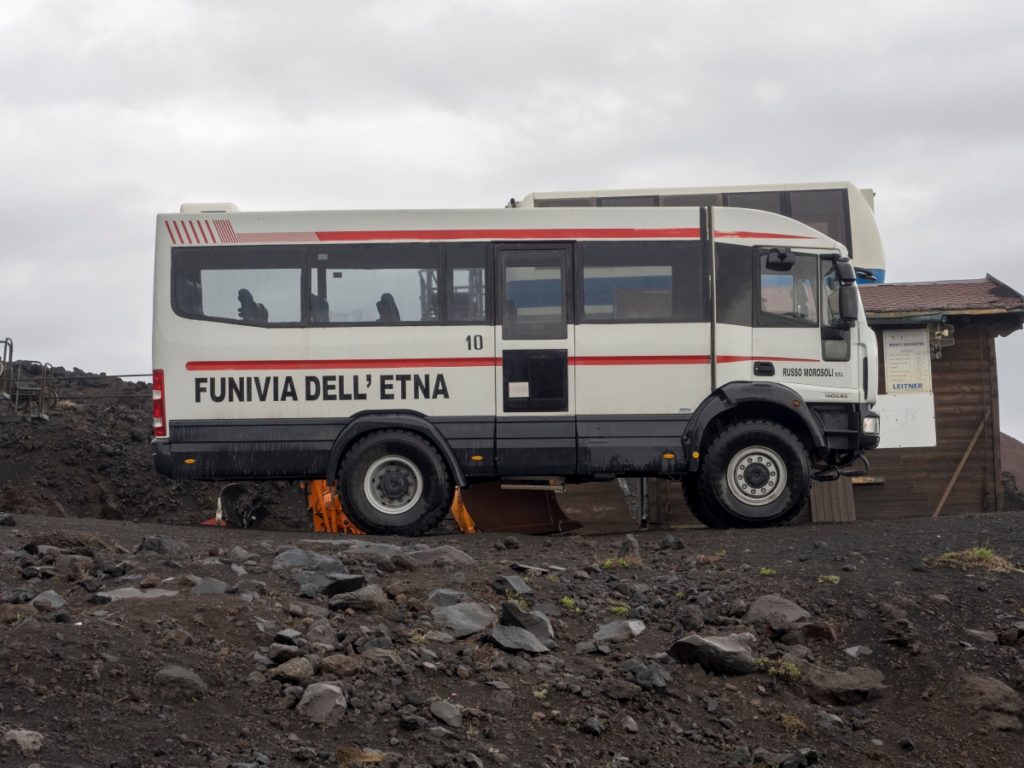
Once we arrived, the wind hit us with full strength and pushed the clouds away for a second.
We rushed towards the Piano del Lago (2 672m), a crater from the 2001 eruption, passing some unprepared tourists in shorts and sandals, shivering in the gusts of wind.
The crater was monumental, with the rocks in a shade of copper red. After a quick break for pictures, we hurried down. The clouds started to overtake the mountain again. We could barely see further than 10 metres ahead.
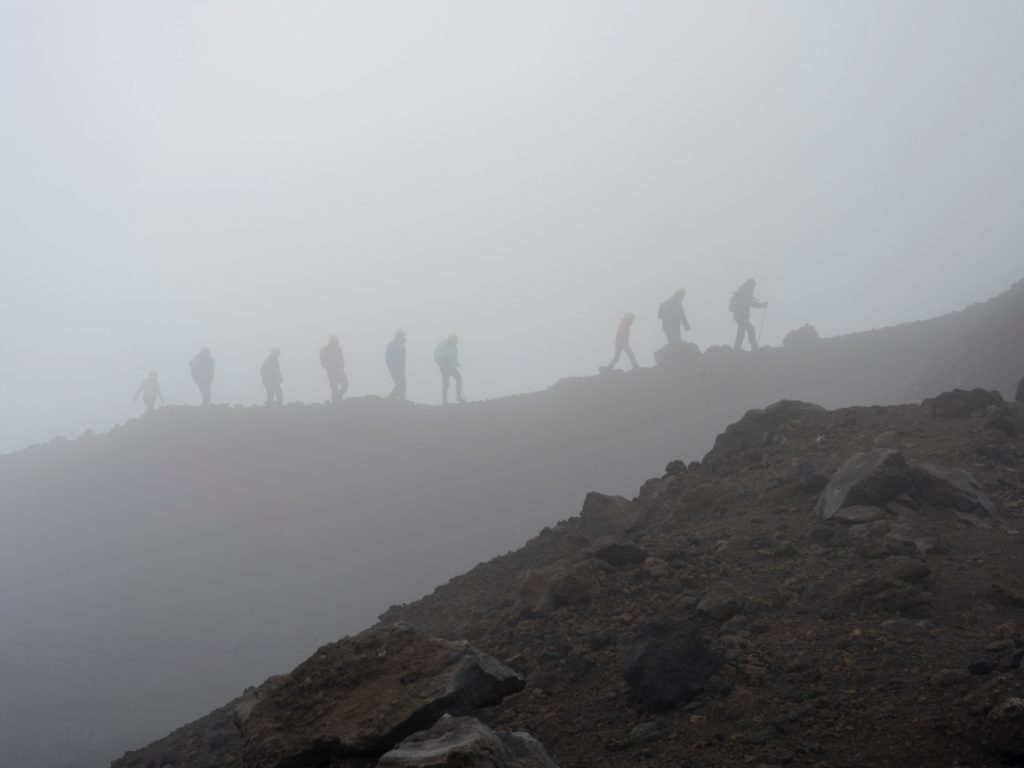
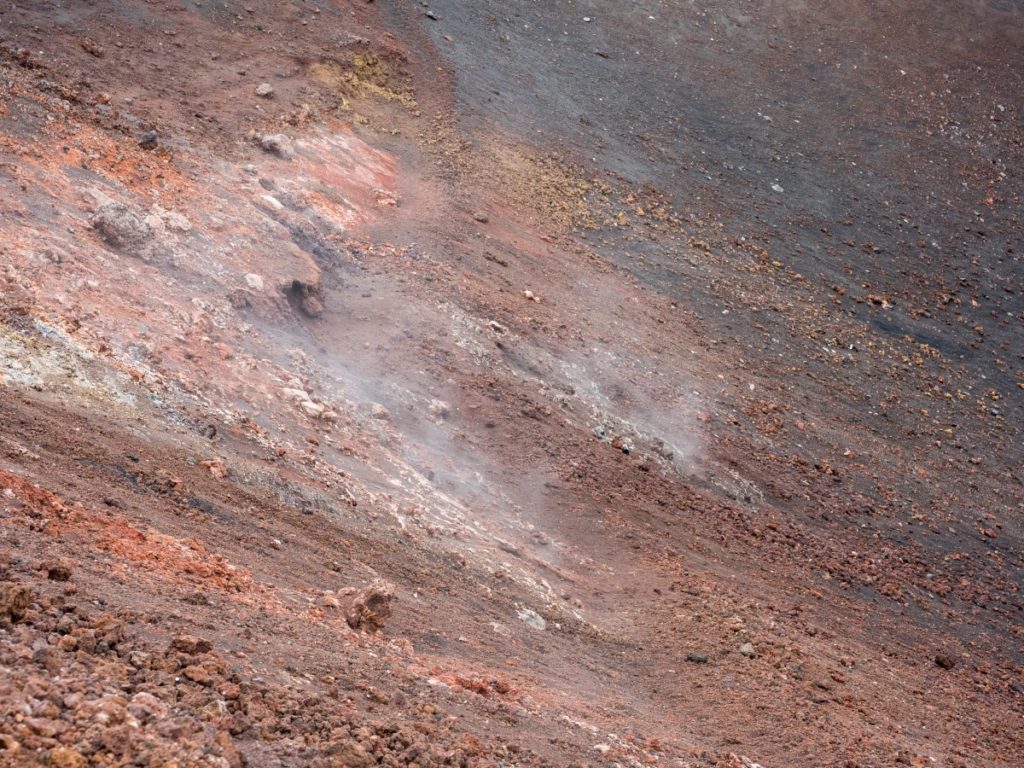
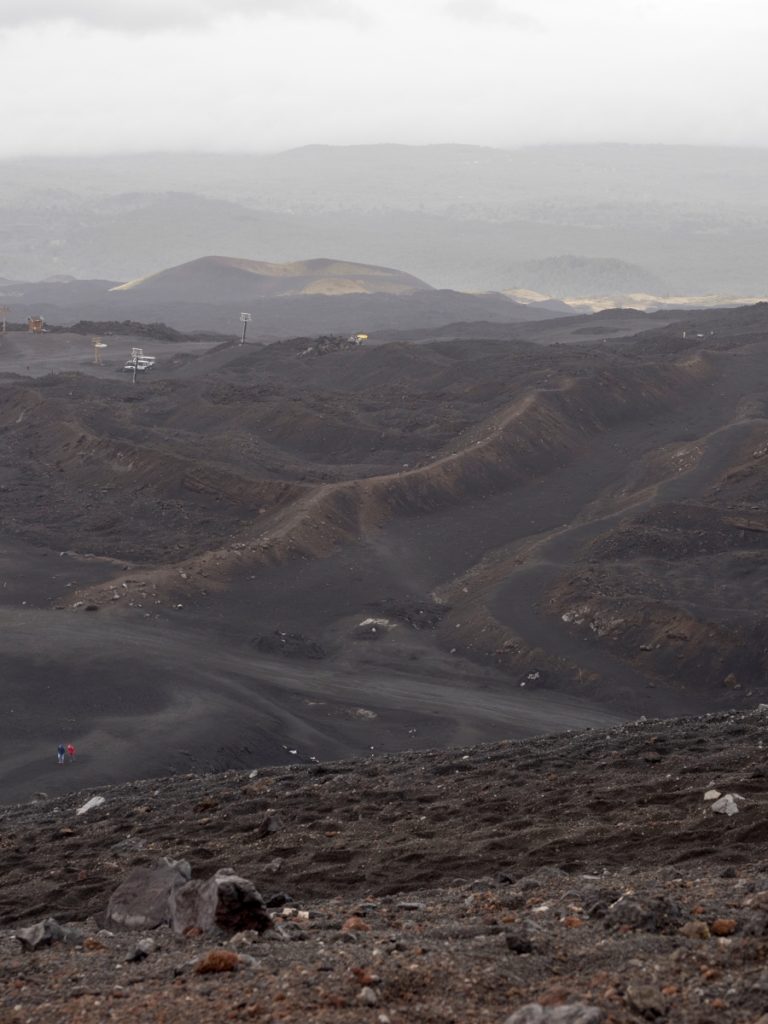
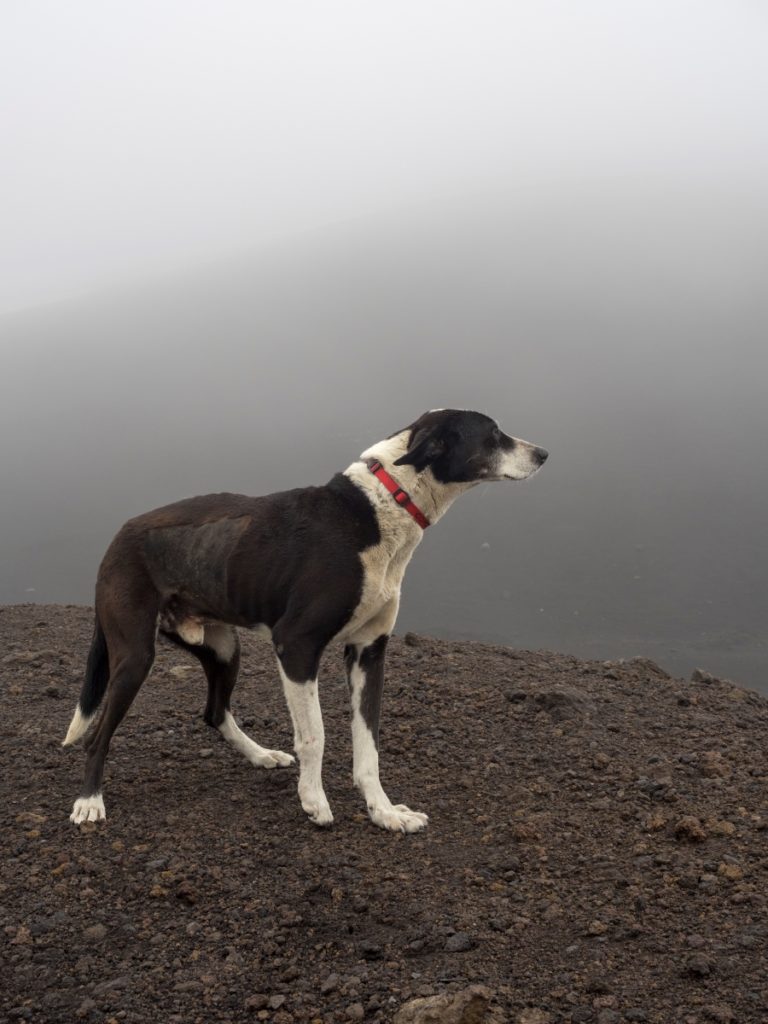
Accommodation near Mount Etna
Catania
Most tourists visiting Mount Etna stay in Catania or one of the small towns around. Catania is the easiest option, as it has plenty of hotels and B&Bs and some good restaurants where you can fill your tummy with pizza after the Etna hike.
If you’re a solo traveller looking to meet new people, I recommend the Ostello degli Elefanti hostel in Catania.
Last time, we stayed one night in Stella del Sud – a cheap B&B with a very convenient location (just 10 minutes from the train station) and a kind owner who gave us plenty of advice. This is a perfect option if you’re on a budget but don’t want to stay in a hostel dorm.
Rifugio Sapienza
We decided to stay one night in Rifugio Sapienza to immerse ourselves in the Etna experience and have two days of hiking. The hotel is modest and simple. The small windows and lack of view were slightly disappointing, but the room was comfortable and clean, and the breakfast was amazing.
We also appreciated that we could check in early (right after we arrived with the bus from Catania at 10:15) and leave our luggage at the reception until the afternoon of the day of the check-out.
We paid 90 euros for a double room.
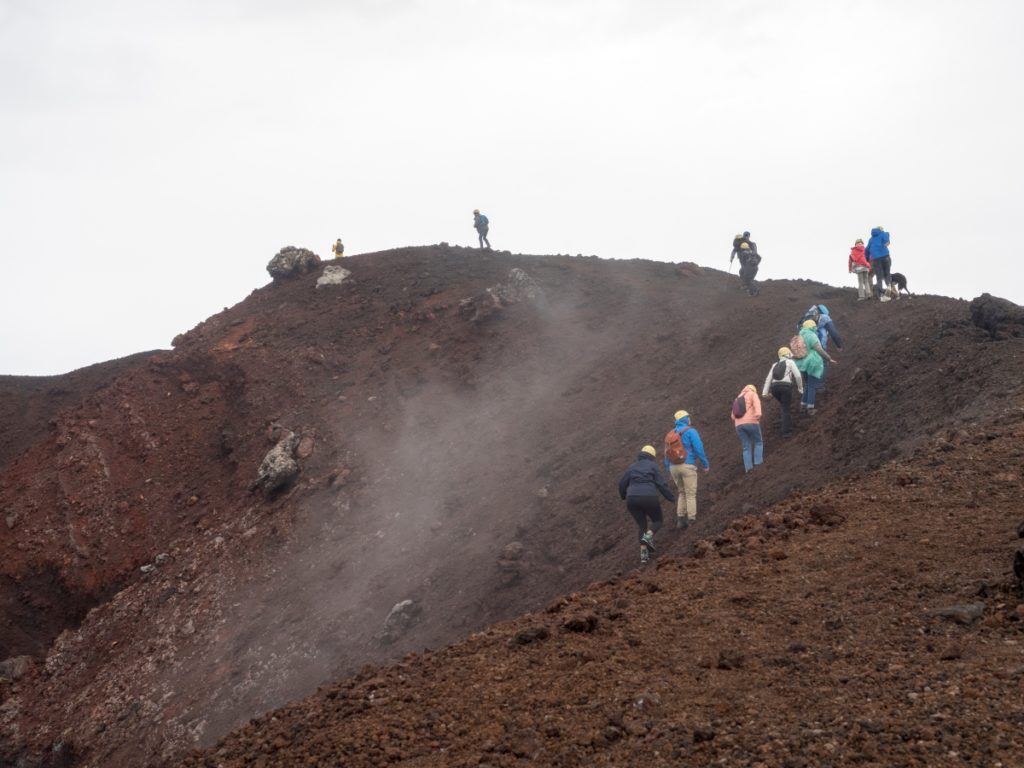
Pingback: Hiking Mount Vesuvius: The Gran Cono and The Valley of Hell